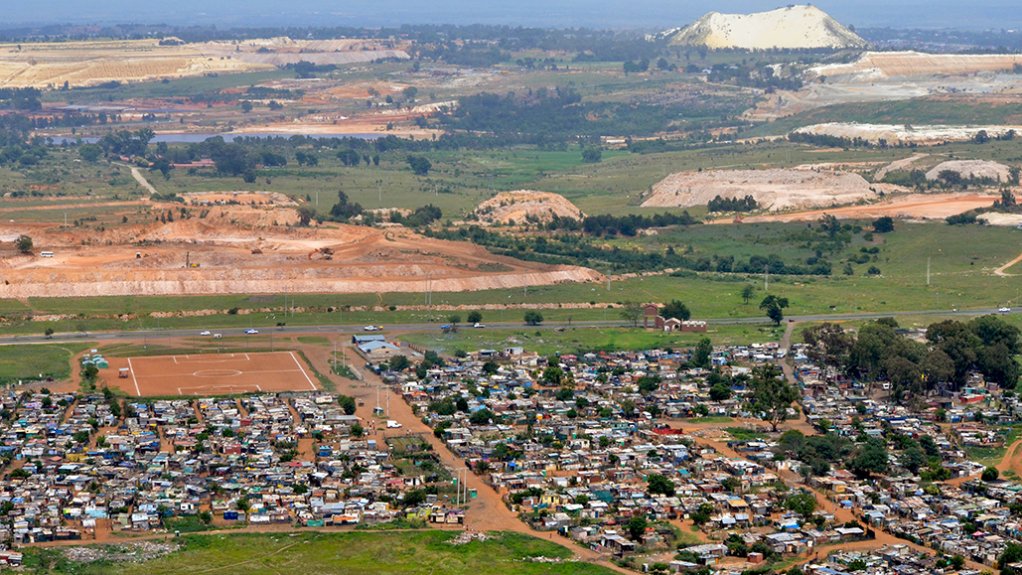FSE holds ongoing tailings workshops


IMPROVING TSF MANAGEMENT Considering that mining historically results in environmental liabilities and disrupted communities, the workshops were well received
Photo by Mark Olalde
Environmental organisation the Federation for a Sustainable Environment (FSE) has been conducting tailings training workshops with some of the host communities of local miners on the Global Industry Standard on Tailings Management (GISTM).
“Since tailings storage facilities (TSFs) are built to contain mining residue and are among the largest dams and structures in the world, and will stand in perpetuity, the GISTM requires that mining companies take responsibility and prioritise the safety of TSFs through all phases of a mine’s life cycle, including closure and post-closure. It also requires the disclosure of relevant information to support public accountability,” states (FSE) CEO Mariette Liefferink.
She enthuses that the workshops created opportunities for a high degree of face-to-face engagement beyond public participation processes, which are often conducted along formulaic lines.
Mining communities are more likely to support the objectives of the tailings training workshops if they have been involved.
“Issues of concern were acknowledged and considered and possible solutions were proposed. The workshops established responsibilities and responsiveness on the part of the communities and the mine. The FSE’s objectives in terms of its Memorandum of Incorporation are aligned with the objectives of the GISTM,” she adds.
Considering that mining historically results in major environmental liabilities and unenriched and disrupted communities, Liefferink states that the workshops were well received.
Willing Contributors
The first phase of these workshops was conducted this year with the nine host communities of diversified miner Sibanye-Stillwater that, as a member of global body the International Council on Mining and Metals (ICMM) ascribes to the GISTM.
The workshops are in addition to those held with representatives of local and district municipalities, councillors, faith-based organisations, civil society and nongovernmental organisations, including representatives of disaster management, and search and rescue teams in the areas where Sibanye-Stillwater operates.
“The GISTM has raised the bar in terms of TSFs management throughout the life cycle. This includes governance, technical and operational aspects and, possibly more importantly, engagements with impacted communities,” states Sibanye-Stillwater tailings engineering VP Ross Cooper.
She notes that significant efforts continue to be undertaken to prevent the failure of TSFs – such as the recent tailings dam failure of Jagersfontein in September last year – to ensure that those affected by failure are aware of the risks, can report them and are prepared for such emergencies. These measures are the ultimate risk mitigation for TSFs near residential areas or industrial operations.
Sibanye-Stillwater’s tailings management system follows a risk-informed, performance-based approach. While upstream TSFs can pose a higher risk, compared to other development methods, upstream facilities can be and have been constructed successfully for multiple decades, she adds.
Monitoring the performance of TSFs is key to early detection of concerns to allow for proactive risk management. To this end, Sibanye-Stillwater has enhanced its surveillance programmes using new technologies, including automated monitoring of piezometric levels and deformation monitoring by satellite.
“A dormant or closed facility can pose a higher risk on account of there not being a permanent presence at the facility, allowing for theft and vandalism of infrastructure, including surveillance equipment. Dormant or closed facilities are also subject to illegal mining, which may compromise the integrity of the facility. A key portion of the community training initiatives is to highlight these risks.“
The second phase of these workshops, which started last month, involved site visits to Sibanye-Stillwater’s TSFs and their zones of influence, and focused on community preparedness and responses in the event of a TSF failure. It also included directly affected parties around Sibanye-Stillwater’s Beatrix operations, in the Free State.
The workshops will be expanded to all of the miner’s operations.
Abiding by the GISTM
Gold miner Gold Fields’ South Deep mine, in Gauteng, also subscribes to the GISTM, and its community programmes during 2023 will include tailings training workshops.
Liefferink adds that certain local miners that are not members of the ICMM – such as Sibanye-Stillwater subsidiary DRDGold, Harmony Gold and Pan African Resources – have also made similar commitments.
“Local legislation has not been amended since the launch of the GISTM. The South African tailings guide, SANS 102 86 – Code of Practice for Mine Residue Deposits, has been amended to align with the GISTM, but is under final review by the South Africa Bureau of Standards.”
Liefferink states that, aside from the 12 formal GISTM-focused workshops and site visits that have been held with Sibanye-Stillwater, there were a significant number of site visits, engagements and meetings conducted with other miners in support of the GISTM workshops.
This includes Gold Fields, Harmony Gold and Pan African Resources.
These gold miners are also planning more workshops with their host communities and key stakeholders in 2023, she concludes.
Comments
Announcements
What's On
Subscribe to improve your user experience...
Option 1 (equivalent of R125 a month):
Receive a weekly copy of Creamer Media's Engineering News & Mining Weekly magazine
(print copy for those in South Africa and e-magazine for those outside of South Africa)
Receive daily email newsletters
Access to full search results
Access archive of magazine back copies
Access to Projects in Progress
Access to ONE Research Report of your choice in PDF format
Option 2 (equivalent of R375 a month):
All benefits from Option 1
PLUS
Access to Creamer Media's Research Channel Africa for ALL Research Reports, in PDF format, on various industrial and mining sectors
including Electricity; Water; Energy Transition; Hydrogen; Roads, Rail and Ports; Coal; Gold; Platinum; Battery Metals; etc.
Already a subscriber?
Forgotten your password?
Receive weekly copy of Creamer Media's Engineering News & Mining Weekly magazine (print copy for those in South Africa and e-magazine for those outside of South Africa)
➕
Recieve daily email newsletters
➕
Access to full search results
➕
Access archive of magazine back copies
➕
Access to Projects in Progress
➕
Access to ONE Research Report of your choice in PDF format
RESEARCH CHANNEL AFRICA
R4500 (equivalent of R375 a month)
SUBSCRIBEAll benefits from Option 1
➕
Access to Creamer Media's Research Channel Africa for ALL Research Reports on various industrial and mining sectors, in PDF format, including on:
Electricity
➕
Water
➕
Energy Transition
➕
Hydrogen
➕
Roads, Rail and Ports
➕
Coal
➕
Gold
➕
Platinum
➕
Battery Metals
➕
etc.
Receive all benefits from Option 1 or Option 2 delivered to numerous people at your company
➕
Multiple User names and Passwords for simultaneous log-ins
➕
Intranet integration access to all in your organisation



















